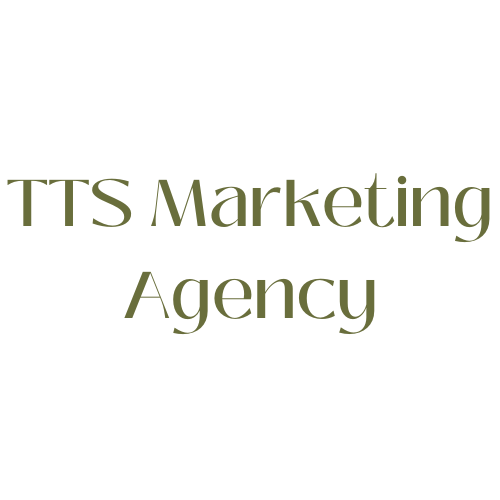How SMART Goals Can Transform Your Small Business
As a small business owner, setting goals is essential to growing your business, but without a clear plan, many goals are just dreams. Enter SMART goals: a powerful framework that can help you transform vague ambitions into achievable steps. Whether you're focused on boosting your social media presence, increasing sales, or growing your email list, SMART goals provide the clarity and structure you need to succeed.
In this post, we'll walk you through what SMART goals are, why they are important for your small business, and how you can apply them to your day-to-day operations. With real-world examples and practical tips, you'll be able to set yourself up for success.
What Are SMART Goals?
SMART goals stand for Specific, Measurable, Achievable, Relevant, and Time-bound. These criteria help ensure that your goals are clearly defined, trackable, and realistic.
Specific: Your goals should be clear and detailed. For example, instead of saying "I want more customers," a specific goal would be, "I want to increase my customer base by 20% within the next 6 months."
Measurable: Tracking progress is crucial. You need to be able to measure your success through data, whether it’s follower count, sales numbers, or website traffic.
Achievable: While it's important to challenge yourself, your goals should still be attainable. Setting unrealistic goals can lead to frustration and burnout.
Relevant: Your goals should align with your broader business objectives. For instance, if your main business goal is increasing brand awareness, you should focus on goals that will contribute to that end, like growing your Instagram followers.
Time-bound: Every goal needs a deadline. Setting a specific timeframe will motivate you to work harder and track your progress over time.
Why SMART Goals Are Important for Small Businesses
For small business owners, time and resources are often limited, which makes it even more important to set goals that are both practical and impactful. SMART goals provide a clear roadmap for growth, helping you focus on what truly matters. Instead of getting overwhelmed by day-to-day operations, SMART goals allow you to prioritize long-term success and consistently measure progress.
When you create SMART goals, you are also setting yourself up for accountability. With a clear deadline and specific measurements in place, you can regularly evaluate whether you're on track or need to adjust your strategy.
How to Create SMART Goals for Your Small Business
Let’s break down each element of a SMART goal in more detail and look at some examples to illustrate how they can apply to your small business strategy:
Specific
Start by being crystal clear about what you want to achieve. For example, rather than saying "I want more website visitors," a SMART goal would be: "I want to increase website traffic by 15% over the next quarter by posting one new blog each week."This goal answers specific questions: What? When? How much? Specificity leads to a better understanding of the steps required to achieve the goal.
Measurable
Measurement is key to understanding whether or not your goal is being met. For instance, tracking website traffic weekly via Google Analytics will give you a concrete idea of whether you're on target to hit that 15% increase.Other measurable metrics could include:
Follower growth on social media
Email list subscribers
Sales or revenue figures
Achievable
It's essential to set goals that are challenging but still within reach. A 15% growth in website traffic might be attainable, while a 200% increase could be unrealistic. Consider factors like your current resources, time, and team capacity when determining whether your goal is achievable.If your goal seems too difficult, break it down into smaller steps. For example, rather than focusing on doubling your sales, you could aim to increase sales by 5% every quarter.
Relevant
Make sure your goal aligns with your overall business strategy. If your business is focused on increasing brand awareness, a relevant goal could be growing your Instagram followers or expanding your email list. Ask yourself, "Does this goal contribute to my long-term business objectives?"Sometimes, businesses get distracted by “vanity metrics”—like the number of likes or comments a post gets—which don't necessarily drive growth. Ensure your goals genuinely support your overall mission.
Time-bound
A clear deadline helps keep you motivated. It’s one thing to say, "I want to increase website traffic," and another to say, "I want to increase website traffic by 15% by the end of Q4." Setting deadlines ensures that you stay on track and make progress toward your goal.A good tip is to break down your goal into smaller timeframes to avoid procrastination. For example, if your goal is to grow Instagram followers by 1,000 in 3 months, you can set weekly milestones to make sure you’re progressing toward that goal.
Examples of SMART Goals for Small Businesses
Now that we’ve explained the framework, here are some examples of SMART goals that you can implement in your own business:
Grow your email list by 200 subscribers by November 1st through weekly newsletters and targeted social media campaigns.
Increase website traffic by 10% over the next 6 months by consistently publishing SEO-optimized blog posts.
Boost LinkedIn engagement by getting 50 comments per week by posting daily and responding to each comment.
SMART goals can truly transform the way you approach your small business strategy. By focusing on clear, measurable, and achievable goals, you'll be able to track your progress and adjust your approach as needed. Remember to regularly evaluate your goals and celebrate your wins along the way.
If you need help setting or tracking your SMART goals, check out our latest YouTube video here: [insert link]. And don’t forget to download our free SMART goals template to get started today!

